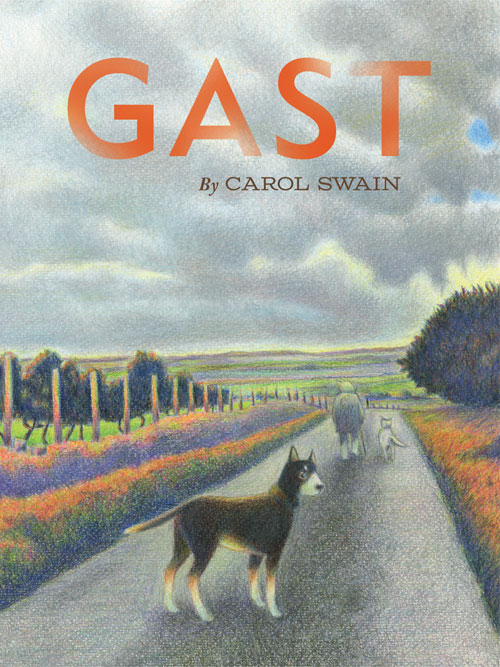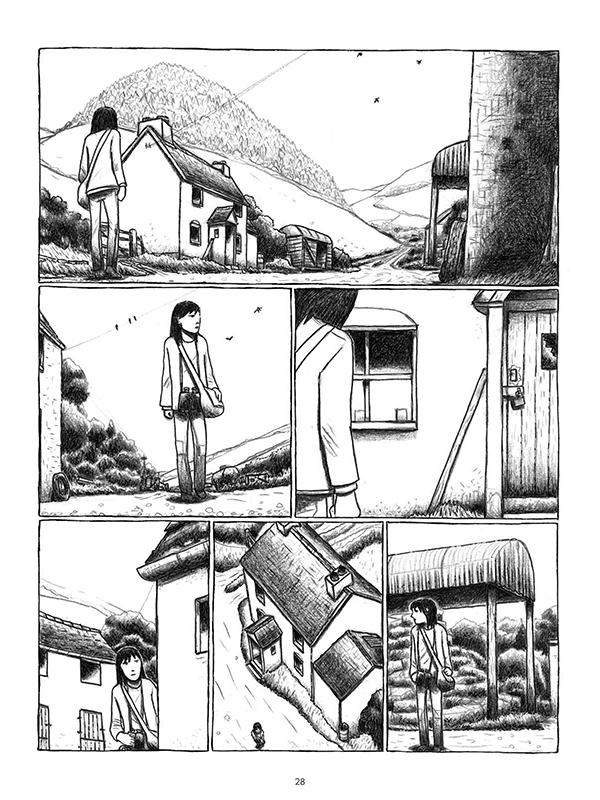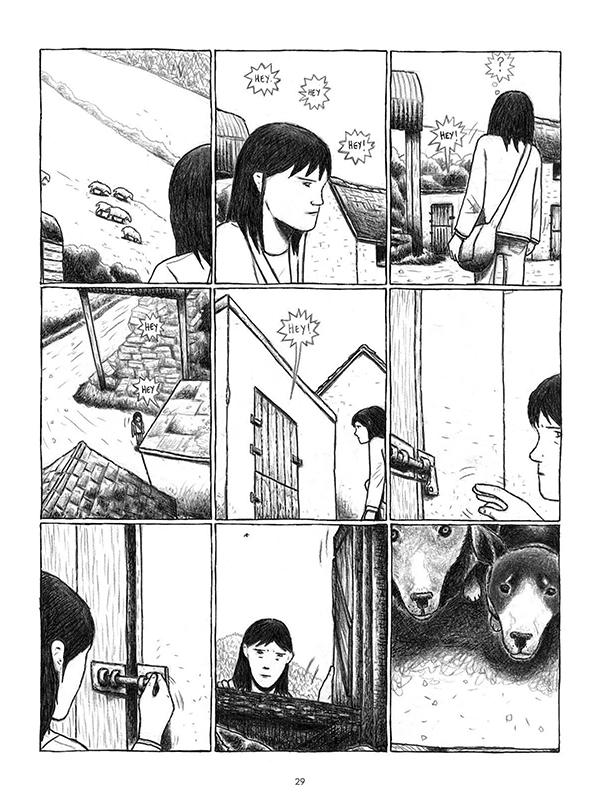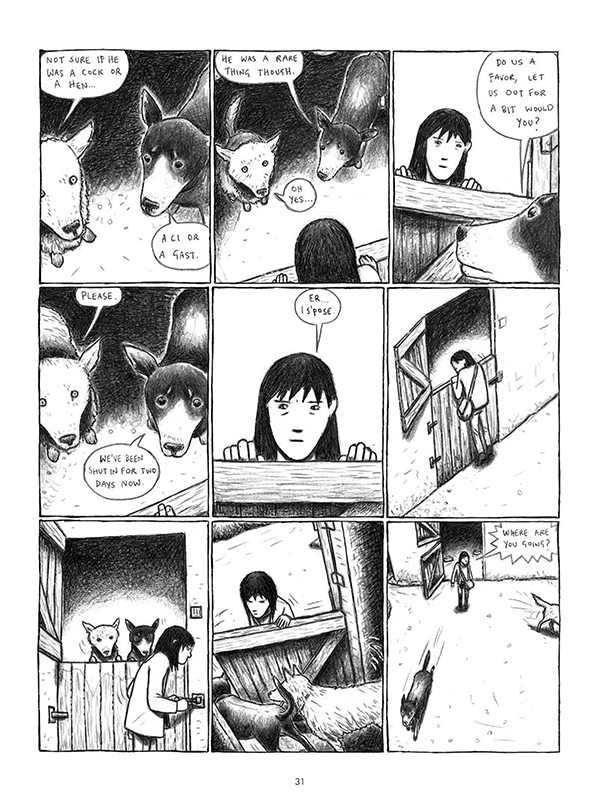
Writer & Artist: Carol Swain
Publisher: Fantagraphics
Release Date: August 17, 2014
Everything about Carol Swain’s work whispers minimalism: her brief titles, her preference for shorter formats (she hasn’t produced a book-length narrative in a decade), her spare dialogue and, most of all, her quiet, repetitive panel composition. Swain was born in Wales, the setting of her latest book, Gast; the country remains isolated and rural, intent on maintaining a separate identity from the rest of the United Kingdom. That identity includes its own language, which supplies the title of the book (“gast” translates as “female dog”) and colors a good deal of its atmosphere.
Gast features adolescent Helen, who’s recently moved with her mother to Wales. She spends most of her time outside, observing nature and writing/drawing in her notebook, focusing specifically on birds. The story proceeds as a kind of detective tale, with Helen uncovering the details of her neighbor Emrys’ suicide, although her investigations are prompted more by her being a child and, therefore, having information withheld from her, than by any actual mystery. Helen and Emrys never meet. She only learns of his existence through a current neighbor, Bill the egg farmer, who refers to Emrys as a “rare bird,” which attracts her interest. From there, she tracks down clues, mostly through talking to farm animals. Swain never explains whether the dogs, sheep and birds who speak to Helen are literally, fantastically doing so, or whether the conversations take place entirely in her mind. Nor is it necessary for her to do so. The reader should simply take these developments at face value and turn one’s attention to the story.
There is a bluntness to the way the animals converse, allowing Helen to obtain more information from them than from the other humans she interviews. Emrys’ isolation (he lived by himself for the most part) also means those animals were in many cases the only witnesses present. They lie and dissemble, too (as Helen notes in her journal), and her dealings with them serve as good preparation for the ensuing, complex adult world.
The interactions between human and animal (livestock farming being a notable industry in Swain’s part of Wales) also serve to present a clear-eyed sadness about the ways in which humanity exploits the natural world. Swain doesn’t argue against raising cattle and sheep for slaughter, but she seems to wish for more gentleness in the way we treat each other, both human and beast.
Swain’s scuffed yet simple charcoal lines along with her habit of portraying near identical entities in consecutive panels encourage patience on the reader’s part. If you were to whip through this book, which you could easily do considering the percentage of pages without dialogue, you would not be reading Gast the way it was intended to be read. Slow your roll and look carefully at each panel, even if it doesn’t seem to contain new information. It may not. But this pacing is crucial to the feel Swain establishes. To some extent, Gast is a story about growing up, a classic coming-of-age tale in which the protagonist moves from a black-and-white moral universe to one full of grays, but it is just as much about where it takes place as it’s informed by it.
The tempo of life in rural Wales is seasonal, which might as well be glacial to someone from an urban environment. Its farmland and weather are harsh and unforgiving, which you would think would encourage closeness to one’s neighbors but, in practice, doesn’t seem to. From many perspectives, the global move away from agriculture is both a tremendous life improvement (no more scrabbling in the dirt) and a tragedy — it enforces a separation from nature. Helen’s journey into adulthood seems to mirror this large-scale transition, but her transformation is by no means complete by the end of the book. She has a foot in both worlds: the one of magic and nature, separated from the demands of most other humans, as well as the newer, sanitized reality of restaurant eating, customer service and industry. The chances are strong that she’ll have to choose at some point, but, thankfully, not yet.
![]()




